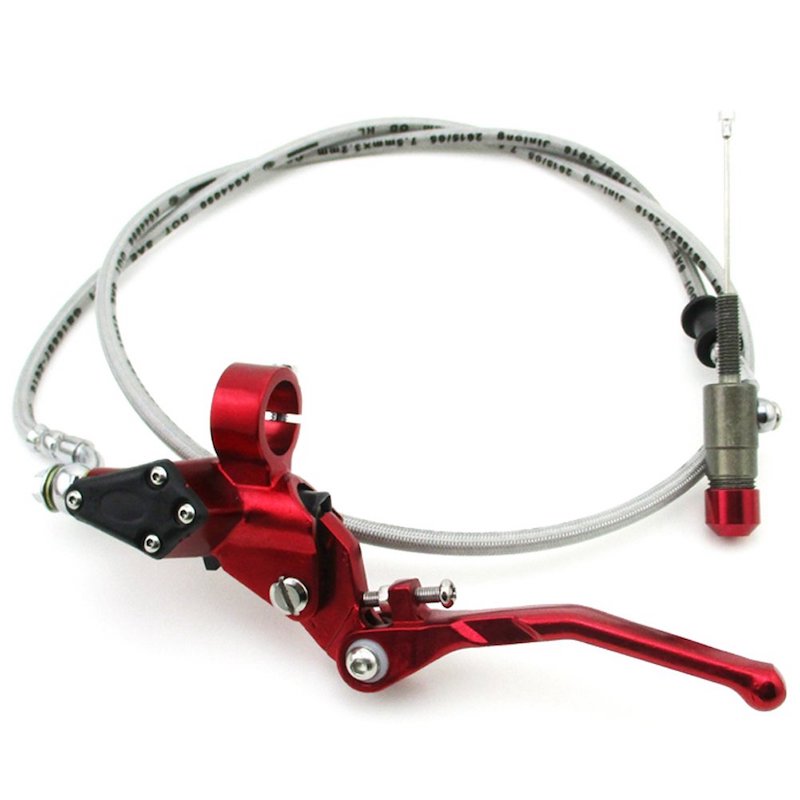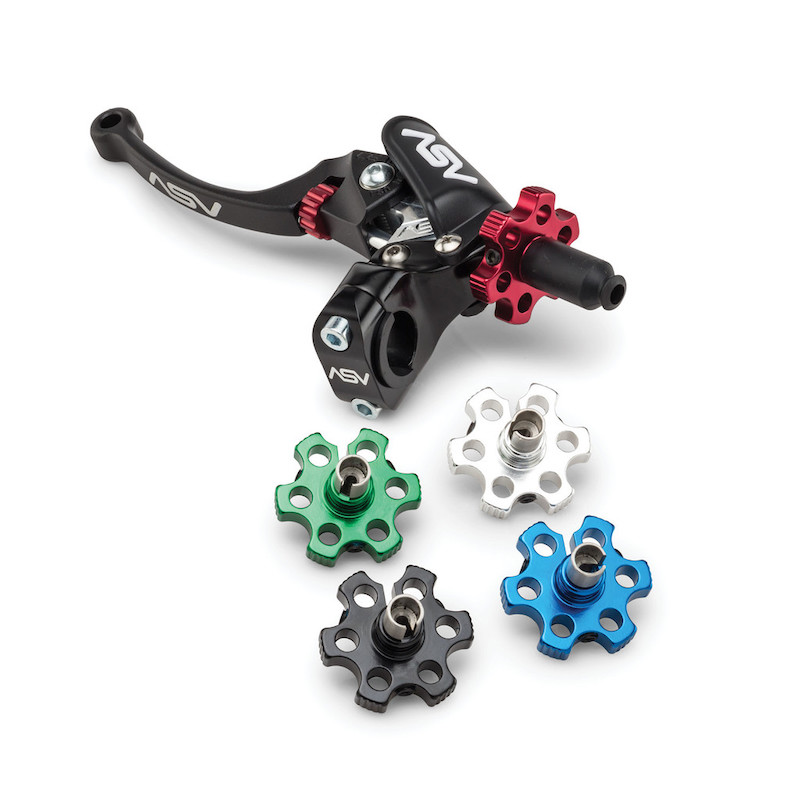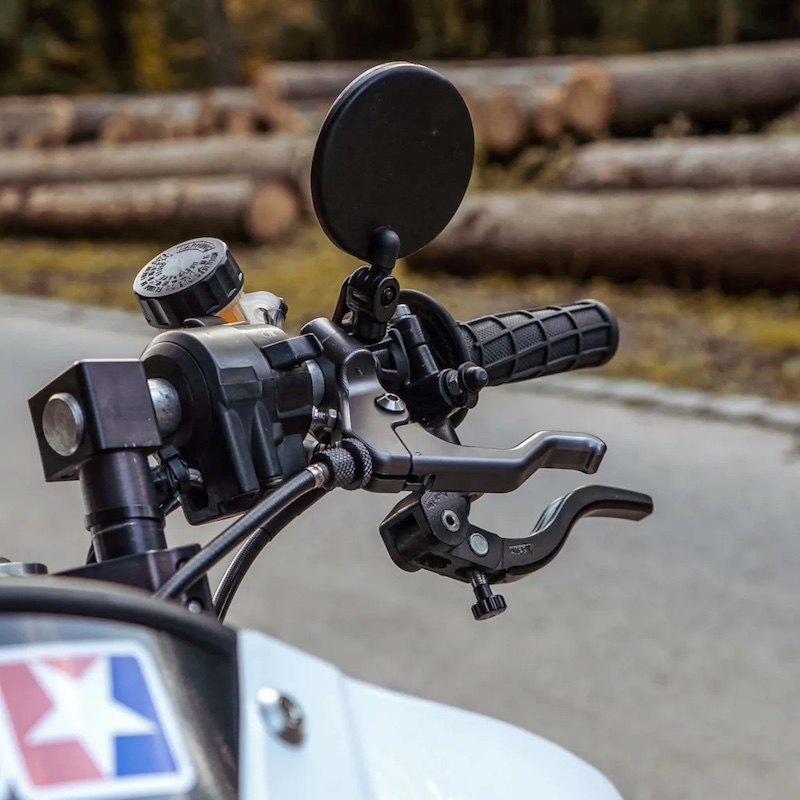Introduction
The clutch in a motorcycle is a critical component that allows the rider to disengage the engine from the transmission to change gears or come to a stop. The clutch system consists of several parts. Including the clutch lever, clutch cable, clutch assembly, and the clutch plates. The motorcycle clutch is an essential component of the bike that allows the rider to engage and disengage the engine power to the transmission. Understanding how the clutch works and how to properly use it is crucial for every motorcycle rider. In this article, we will delve into the details of the motorcycle clutch, its components, how it functions. We will provide tips on how to use it effectively.
Part 1: The Basics of the Motorcycle Clutch
When the rider pulls the clutch lever, it pulls on the clutch cable, which in turn disengages the clutch assembly from the engine. This allows the rider to shift gears without causing any damage to the engine or transmission. It also allows the rider to come to a stop without stalling the engine, as the clutch disengages the engine from the transmission when the motorcycle is at a standstill.
Level 1: What is a motorcycle clutch?
The motorcycle clutch is a mechanical device that connects and disconnects the engine from the transmission, allowing the rider to change gears and control the speed of the motorcycle. It consists of several key components including the clutch lever, clutch cable or hydraulic system, clutch plates, and the clutch basket.
Level 2: How does the motorcycle clutch work?
When the rider pulls the clutch lever, it disengages the engine from the transmission, allowing the rider to shift gears without causing any damage to the gearbox or the engine. Releasing the clutch lever engages the engine to the transmission, transferring power from the engine to the rear wheel, propelling the motorcycle forward.
Part 2: Components of the Motorcycle Clutch
The clutch assembly itself consists of several components, including the clutch plates, pressure plate, clutch basket, and clutch hub. When the clutch lever is released, the clutch plates are pressed together by the pressure plate, engaging the engine with the transmission and allowing power to be transferred to the wheels. As the clutch lever is pulled, the pressure on the clutch plates is released, allowing them to separate and disengage the engine from the transmission.
Level 1: Clutch lever and cable/hydraulic system
The clutch lever is located on the handlebar and is used by the rider to control the clutch. When the rider pulls the lever, it disengages the clutch, and when released, it engages the clutch. The clutch cable or hydraulic system transmits the movement of the clutch lever to the clutch assembly.
Level 2: Clutch plates and clutch basket
The clutch plates are the key components that engage and disengage the engine from the transmission. When the clutch lever is pulled, the pressure on the clutch plates is released, allowing them to separate and disengage the engine. The clutch basket holds the clutch plates and is connected to the engine.
Part 3: Understanding Clutch Engagement and Disengagement
Level 1: Clutch engagement
Clutch engagement refers to the process of connecting the engine power to the transmission by releasing the clutch lever. It is essential to engage the clutch smoothly to avoid stalling the motorcycle or causing unnecessary wear on the clutch components.
Level 2: Clutch disengagement
Clutch disengagement occurs when the rider pulls the clutch lever, separating the engine power from the transmission. This allows the rider to shift gears without causing any damage to the gearbox or the engine.
Part 4: Tips for Using the Motorcycle Clutch Effectively
Level 1: Smooth clutch operation
To use the motorcycle clutch effectively, it is important to engage and disengage the clutch smoothly. Abrupt or jerky movements can cause the motorcycle to stall or result in premature wear on the clutch components.
Level 2: Proper clutch adjustment
Ensuring that the clutch cable or hydraulic system is properly adjusted is crucial for smooth and effective clutch operation. A loose or tight clutch can affect the engagement and disengagement process. Leading to poor performance and potential damage to the clutch components.
Part 5: Maintenance and Troubleshooting of the Motorcycle Clutch
Level 1: Clutch maintenance
Regular maintenance of the motorcycle clutch is essential for optimal performance. This includes checking the clutch cable or hydraulic system for wear and proper adjustment. As well as inspecting the clutch plates and basket for signs of wear and tear.
Level 2: Troubleshooting common clutch issues
Common clutch issues such as slipping, dragging, or worn-out clutch plates can affect the performance of the motorcycle. Understanding how to troubleshoot these issues and knowing when to replace or adjust the clutch components is crucial for maintaining the overall performance of the motorcycle.
Common Issues with Motorcycle Clutches
Level 1: Common Issues with Motorcycle Clutches
- Overheating: If a clutch is engaged for extended periods, it can overheat and cause damage to the clutch plates.
- Slipping: A slipping clutch can occur when the friction plates begin to wear down, causing the clutch to not fully engage with the engine.
Level 2: Signs of Clutch Problems
- Difficulty Shifting: If you have trouble shifting gears smoothly, it could be a sign of clutch problems.
- Burning Smell: A burning smell while riding may indicate that the clutch is slipping or overheating.
Upgrading Motorcycle Clutches
Level 1: Upgrading Motorcycle Clutches
- High-Performance Clutch Kits: Upgrading to a high-performance clutch kit can improve the overall performance and durability of the clutch system.
- Aftermarket Clutch Levers: Aftermarket clutch levers can offer improved ergonomics and adjustability for a more comfortable riding experience.
Level 2: Custom Clutch Covers
- Customizing the Look: Custom clutch covers can add style and individuality to your motorcycle.
- Improved Cooling: Some aftermarket clutch covers are designed to improve cooling, which can help prevent overheating issues.
Tips for Maintaining a Motorcycle Clutch
Maintaining the clutch system is crucial to the proper functioning of a motorcycle. Regular maintenance, such as checking and adjusting the clutch cable, keeping the clutch assembly clean and well-lubricated, and replacing the clutch plates when they become worn. It can help ensure that the clutch operates smoothly and efficiently. Ignoring clutch maintenance can lead to premature wear and potential failure of the clutch system, resulting in costly repairs and potential safety hazards for the rider.
Level 1: Tips for Maintaining a Motorcycle Clutch
- Regular Inspections: Regularly check the clutch cable, free play, and fluid levels to ensure everything is in good working order.
- Proper Adjustment: Periodically adjusting the clutch cable tension can help maintain smooth and consistent clutch engagement.
Level 2: Changing the Clutch Fluid
- Importance of Fresh Fluid: Over time, clutch fluid can become contaminated, leading to reduced clutch performance. It’s important to periodically replace the clutch fluid to maintain optimal performance.
- Bleeding the Clutch: Properly bleeding the clutch system can remove air bubbles and ensure that the clutch operates smoothly.
Conclusion
The clutch plates are a vital part of the clutch system, as they are the components that actually engage and disengage the engine from the transmission. The friction material, such as cork or steel, and you can wear down over time from the constant engagement and disengagement of the clutch. When the clutch plates wear down, they can begin to slip, causing a loss of power and potentially damaging the clutch assembly.
The motorcycle clutch is a vital component of the bike that requires proper understanding and maintenance for optimal performance. By familiarizing yourself with the basics of the clutch, its components, and how to use it effectively, you can ensure a smooth and enjoyable riding experience. Remember to practice smooth clutch operation and keep up with regular maintenance to keep your motorcycle running at its best.



